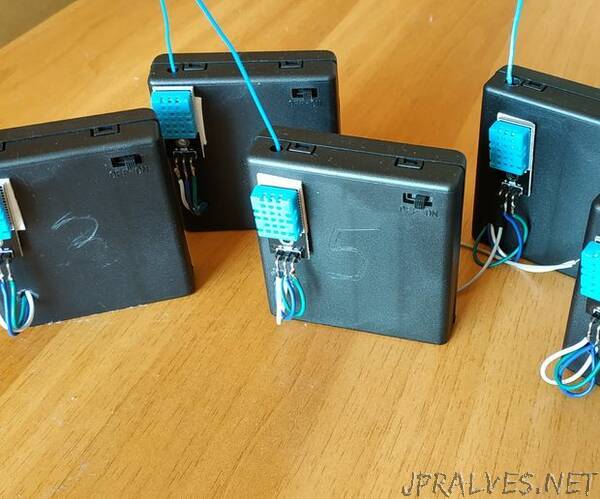
“What are wireless sensor networks?
A simple definition would be: the wireless sensor networks refers to a group of electronic devices distributed on a certain area for monitoring and recording environmental data, that are wirelessly transmitted to a central location to be processed and stored.
Nowadays Wireless Sensor Networks can be used in several ways, bellow are just a few examples:
Areas of ecological surveillance of forests, rivers, lakes, seas and oceans;
Possibility to alert in case o terrorist, chemical, biological, epidemic attacks;
Monitoring systems for children, elderly people, patients or people with special needs;
Surveillance systems in agriculture and greenhouses;
Weather-Forecast monitoring system;
Surveillance of city traffic, schools, car parks;
And many, many other applications.
In this paper I want to show the results of an experiment with wireless sensor networks that have been used for monitoring temperature and humidity data, with a slow and relatively predictable variation. For this experiment I chose to use sensor-senders that I built by my own using affordable modules. The receiver is also DIY, the communication is unidirectional (on the 433 MHz radio band), meaning that the sensors only transmit the data and the central location only receives. There is no communication between sensors and from receiver to sensors.
But why choosing to use multiple transmitters and only one receiver? Obviously the first reason would be “making it simple”. The simpler is the assembling, the less likely it is to fail, and it definitely is much easier to repair and replace the single components in case of malfunctions. Power consumption is also lower, the batteries will last longer (sensors will only consume while monitoring and receiving, the rest of the time the device will be in deep sleep mode). The fact that it is simple makes the device also cheap. Another aspect to keep in mind is the coverage area. Why? It is much easier to build and use a sensitive receiver than to have a sensitive receiver and a powerful transmitter at both the sensors and the central module (this is necessary for a good bidirectional communication). With a sensitive and good-quality receiver it is possible to receive data from a long distance, but emitting data for the same distance requires high emission power and this comes with high costs, electricity consumption and (let’s not forget) the possibility to overrun the legal maximum transmitter power on the 433 MHz band. By using a medium-quality receiver, cheap but with a high-quality antenna (even DIY) and cheap transmitters with a good-quality antenna, we can achieve excellent results at a fraction of the cost of existing wireless sensor networks.”
